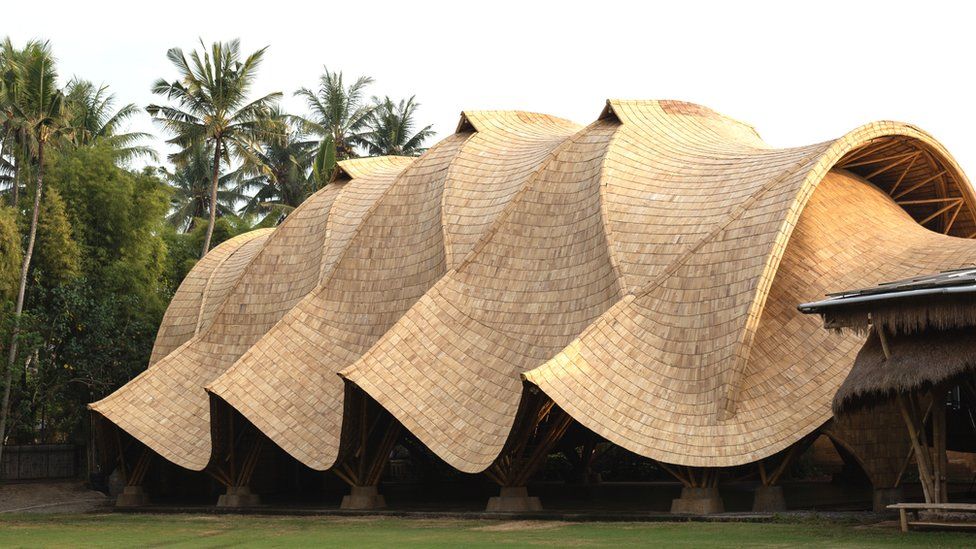-

-
-
Loading

Loading

The Arc at the Green School in Bali is a remarkable structure made entirely from bamboo. It consists of a series of bamboo arches spanning 19 meters and is considered one of the most significant bamboo structures ever built. The project was designed by architecture studio Ibuku and used approximately 12.4 tonnes of Dendrocalamus Asper, a type of bamboo known for its strength and versatility. The lightweight structure was completed in April 2021. The use of bamboo in construction showcases its green credentials as it helps reduce the carbon footprint of the industry. Bamboo plants, like trees, sequester carbon as they grow and can serve as carbon sinks, storing more carbon than many tree species. According to a report by the International Bamboo and Rattan Organisation (INBAR) and Delft University of Technology, a bamboo plantation can store 401 tonnes of carbon per hectare, compared to 237 tonnes stored by a Chinese fir tree plantation. Bamboo is also renowned for its rapid growth, with some varieties growing as quickly as one meter per day. Unlike most trees, when a bamboo stem is harvested, it regrows, making it a sustainable building material. Although bamboo has a long history of use in construction in Asia, it remains a niche material in Europe and the US. However, its demand is increasing, with more clients using bamboo structures and products. One of the challenges in adopting bamboo as a construction material is the lack of familiarity and engineering knowledge. Structural engineers have had to conduct tests, such as loading bamboo structures with sandbags, to prove their strength. Christopher Matthews, from the London-based structural engineers Atelier One, states that as the use of bamboo becomes more widespread, the cost of utilizing it in Europe is likely to decrease. Efforts are also being made to grow bamboo in Europe, as the larger species do not thrive in colder climates. BambooLogic, the first large-scale bamboo grower in Europe, has plantations in Portugal. They are exploring the potential of bamboo to restore degraded soil, as the plant captures carbon dioxide and improves the earth. Despite the increasing interest in bamboo, standardization remains a challenge in Europe. Building with bamboo requires understanding how the material performs in different environments and climates. The development of international standards for bamboo construction materials is crucial in advancing its use. Companies like BamCore in California offer sustainable building materials using engineered bamboo and wood panels. These panels are used to construct buildings up to five storeys high, catering to both commercial and residential projects. Other industries, like event marketing agency Natchlab, are also recognizing the creative potential of bamboo in structures and installations. Overall, bamboo presents an environmentally friendly alternative in construction, with its carbon sequestration capabilities, rapid growth, and versatility. As more research and standardization efforts are made, the use of bamboo is likely to grow, leading to more sustainable and cost-effective building practices.